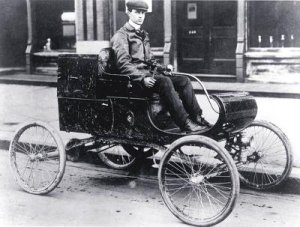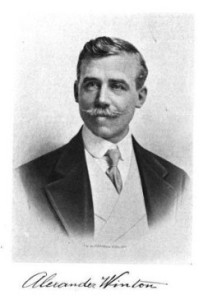In 1880, brothers , Jacobus Spijker and Hendrik-Jan Spijker decided to get in to the business of manufacturing horse-drawn coaches. In 1898, they built a Golden carriage for the Dutch Royal family. The "Gouden Koets" is being used by the Dutch Royal family even now.
The "Gouden Koets” brought fame to the Spijker brothers and they decided to get in to manufacture of motor cars. In 1899, they manufactured their first Benz-engined motor car. The Spijker cars became famous for their performance and in 1903 , they introduced the 6-cylinder ; 60 HP car – the first car with 6 cylinder engine and permanent four-wheel drive.
In 1903, they changed the name of the company from Spijker to Spyker so that name can be pronounced easily in other countries. During the war, Spyker manufactured aircraft and aircraft engines. The Spyker logo with an aircraft propeller is an indication of the aircraft connection –
While the propeller indicates aircraft lineage , the Latin words indicate a road car lineage "Nulla Tenaci Invia Est Via" means "For the tenacious, no road is impassable"
By 1926 , Spyker ceased production and was closed
In 2000, the Spyker brand was resurrected as Spyker Cars by Victor Muller and Maarten de Brujin to manufacture sports cars – one of the well-known and famous car being the C8.
In 2006, the Midlands F1 team was acquired by Spyker cars and renamed as Spyker F1 . Spyker F1 participated in the 2007 Formula 1 season. In 2007, Spyker F1 was sold to UB group and renamed as Force India F1. In 2010, Spyker cars acquired Saab from General Motors and in 2011 formed the parent company called Swedish Automobile (SWAN) , which holds Spyker Cars and Saab automobiles.
At present, both Saab and Spyker cars are up for sale.


















































